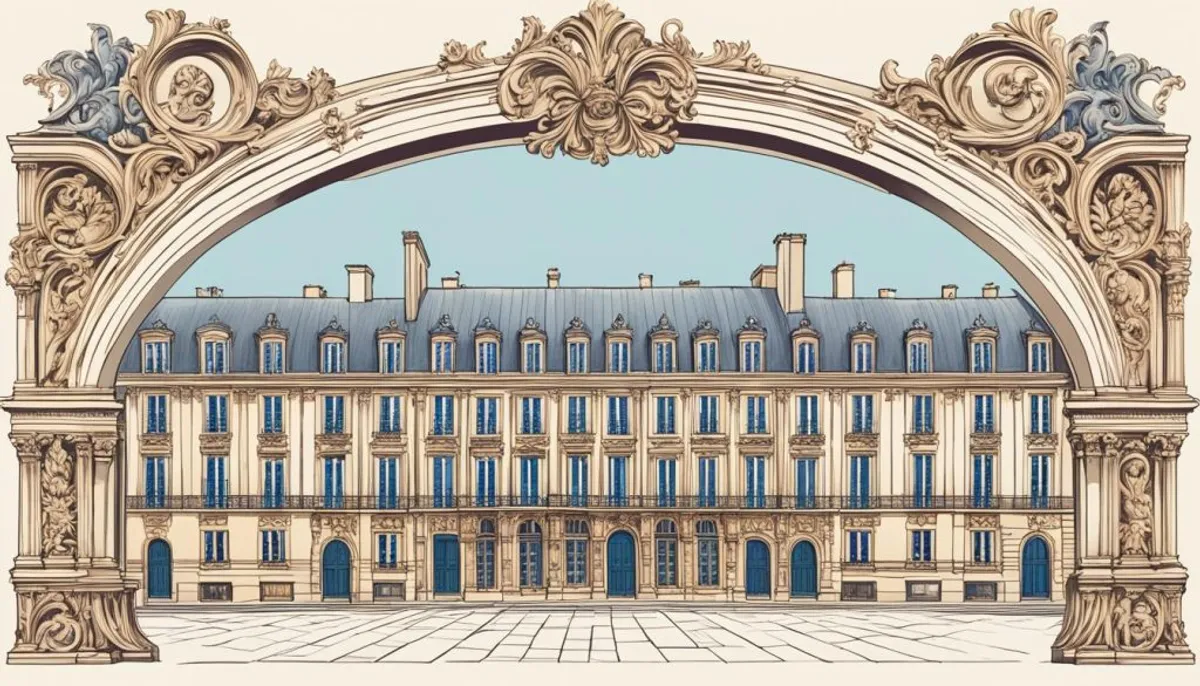The cultural heritage encompasses both tangible and intangible assets. They hold artistic, historical, scientific, or technical significance. Among them are monuments, archaeological sites, works of art, traditions, know-how, and cultural practices.
This heritage is a legacy for future generations. It is protected and valued at both national and international levels.

Introduction to Cultural Heritage
The cultural heritage is more than just a simple legacy of monuments or objects. It is a rich and varied treasure, created by cultures and civilizations. This heritage is a mirror of humanity.
General Definition of Cultural Heritage
The cultural heritage encompasses assets, both tangible and intangible of value. It holds artistic, historical, archaeological, ethnological, or scientific importance. It includes tangible heritage, such as monuments, and intangible heritage, such as traditions.
The definition has changed over time. It has broadened its scope to include cultural diversity. Today, cultural heritage is crucial for the identity and richness of a society.
| Tangible Heritage | Intangible Heritage |
|---|---|
| Historical monuments | Traditions and know-how |
| Archaeological sites | Cultural expressions |
| Works of art | Languages and dialects |
The cultural heritage is rich and complex. It showcases the diversity of cultures and civilizations. Preserving and valuing this heritage is essential for our societies.
Genesis and Evolution of the Concept of Heritage
The notion of cultural heritage has fascinating historical origins. It dates back to the Middle Ages and the Renaissance. In the 17th century, the Benedictines of Saint-Maur played a key role in preserving the memory of the Middle Ages.
Figures like François Roger de Gaignières helped safeguard cultural heritage in France.
Historical Origins of the Concept
The French Revolution initiated the protection of cultural assets. Abbé Grégoire asserted that heritage belongs to all citizens. In the 19th century, the protection of cultural heritage in France evolved.
The establishment of positions for inspecting libraries and museums was an important step.

This evolution demonstrates the growing importance of preserving our history and cultural heritage. This process has evolved over the centuries. It continues to shape our vision of cultural heritage in France today.
What is Cultural Heritage
Cultural heritage is more than just a simple monument or a work of art. It includes a wide range of assets, both tangible (such as buildings or handcrafted objects) and intangible (such as traditions or know-how). Over time, it has evolved to include industrial, landscape, and even genetic heritage.
Cultural heritage is a valuable legacy. It is therefore protected and valued at various levels, locally, nationally, and internationally. This ensures its preservation for future generations.
Different Types of Cultural Heritage
Cultural heritage comes in various forms:
- Tangible heritage: monuments, archaeological sites, works of art, handcrafted objects, etc.
- Intangible heritage: traditions, know-how, cultural expressions, etc.
- Industrial heritage: factories, mines, infrastructures, etc.
- Landscape heritage: parks, gardens, natural landscapes, etc.
- Genetic heritage: genetic resources, plant and animal species, etc.
This diversity showcases the richness and complexity of cultural heritage. It is a valuable legacy to protect for future generations.
Legal and Institutional Framework
The legal and institutional framework for the protection of cultural heritage has been primarily established at the international level. This began in 1945 with the founding of UNESCO. In 1972, UNESCO established the World Heritage List. In France, the decree of February 10, 1976 ratified the Convention for the Protection of World Cultural and Natural Heritage.
The French Heritage Code plays a key role in the protection of public cultural heritage. It covers areas such as archaeology, archives, and historical monuments. This law aims to preserve and transmit this heritage to future generations.
Main Institutions and Regulations
- UNESCO: Established in 1945, creation of the World Heritage Convention in 1972
- Convention for the Protection of World Cultural and Natural Heritage: French decree of 1976
- French Heritage Code: Legislation on various aspects of public cultural heritage
| Institution | Role | Date of Creation |
|---|---|---|
| UNESCO | Creation of the World Heritage Convention | 1945 |
| Convention for the Protection of World Cultural and Natural Heritage | French decree formalizing the convention | 1976 |
| French Heritage Code | Legislation on public cultural heritage | N/A |
This legal and institutional framework aims to protect and transmit cultural heritage to future generations. It applies in France and globally.

Challenges of Heritage Preservation
The preservation of cultural heritage is a significant challenge. It is necessary to protect these assets, both tangible and intangible, from threats. This includes natural and human dangers. The goal is to pass them on to future generations.
Cultural heritage is crucial for our identities and our cultural diversity. It also has an economic impact, especially in tourism, and contributes to the richness of our culture.
Importance of Cultural Heritage
The safeguarding of cultural heritage is essential for our societies. It is necessary to balance preservation and adaptation to the modern world. The cultural heritage offers:
- A link between the past and the present, conveying history and traditions.
- A source of inspiration for artists and creators.
- A tourist and economic asset, generating revenue for regions.
- A factor of social cohesion and enhancement of local identities.
Public authorities and civil society must work together. Their goal is to protect and value cultural heritage. This ensures cultural diversity and the richness of our societies.
Conclusion
Cultural heritage, whether tangible or intangible, is a valuable legacy for future generations. It has evolved from the conservation of historical assets to a broader vision. This vision now includes the diversity of cultural expressions.
The preservation of this cultural heritage poses many challenges. Consideration must be given to conservation and enhancement. There is a legal and institutional framework for this, at various levels.
Cultural heritage is crucial for our identities and our diversity. It is also an asset for the economy and social development. In conclusion, it is essential to protect and transmit this heritage to maintain the cultural richness of our world.
RelatedRelated articles


